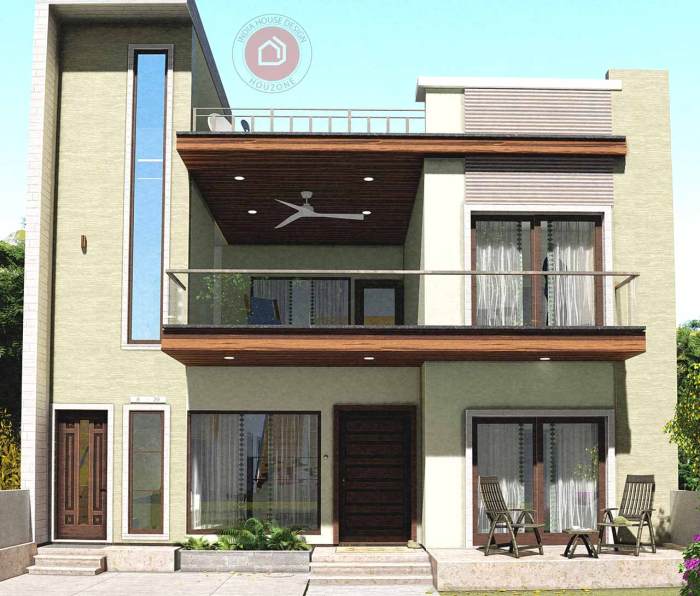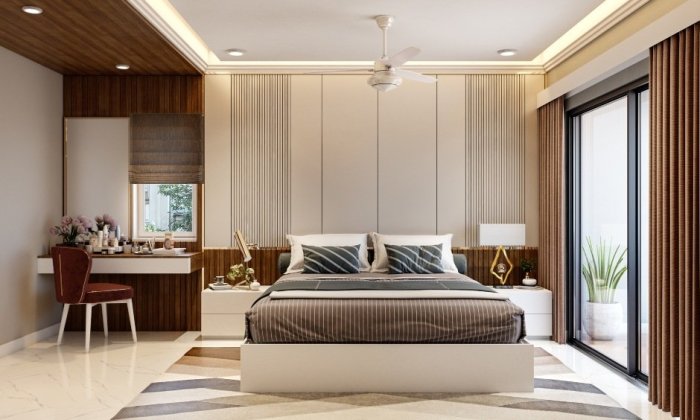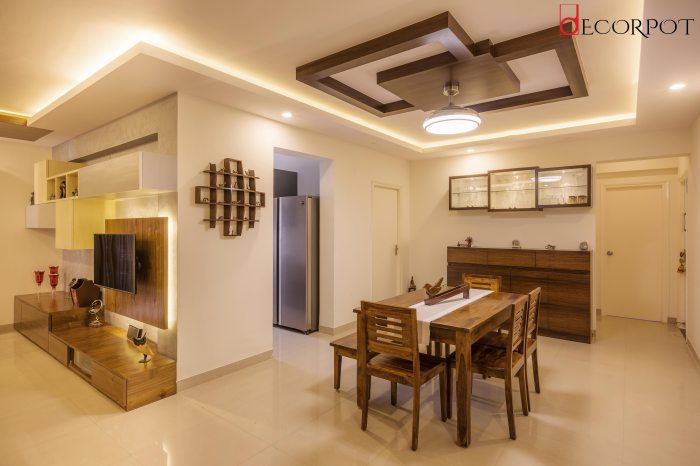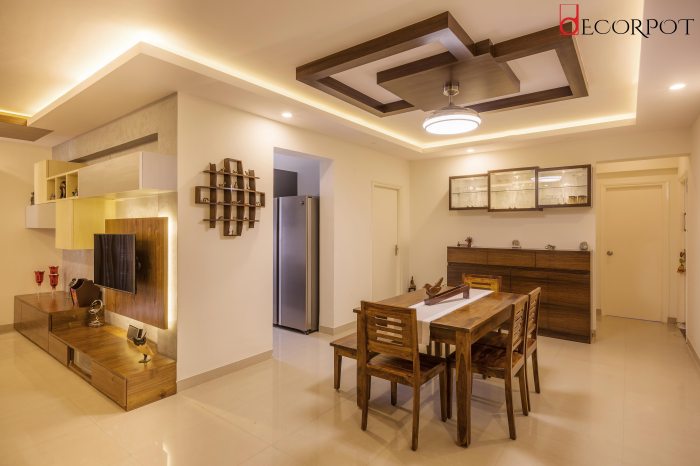3 Bedroom House Interior Design India: A Style Guide is an exploration of how to create beautiful and functional living spaces within the unique context of Indian culture. From understanding the principles of Indian interior design to incorporating traditional elements, this guide provides a comprehensive roadmap for transforming your home into a sanctuary that reflects your personality and embraces the rich heritage of India.
The guide delves into various aspects of interior design, including planning the layout, designing the living room, bedrooms, kitchen, and bathroom. It also emphasizes the importance of incorporating sustainable design principles and provides practical tips for budgeting and planning your interior design project.
Planning the Layout for a 3-Bedroom House
Creating a functional and aesthetically pleasing layout for a 3-bedroom house is crucial for maximizing space and ensuring a comfortable living experience. This section explores the essential considerations for planning the layout, including room placement, natural light and ventilation, and room type functionalities.
Room Placement and Flow
The placement of rooms is essential for optimizing functionality and flow within a home. A well-planned layout ensures that rooms are easily accessible and that traffic patterns are efficient. Here’s a suggested floor plan for a 3-bedroom house, incorporating key considerations for Indian homes:* Living Room:The living room is typically the central hub of the house and should be located in a prominent position, welcoming guests and providing a comfortable space for relaxation.
It should be spacious and well-lit, often connecting to the dining area.
Dining Room
The dining room should be conveniently placed near the kitchen, facilitating easy meal service. It should also be spacious enough to accommodate a dining table and chairs.
Bedrooms
Bedrooms should be located in a quiet and private area of the house, offering ample space for rest and relaxation.
Kitchen
The kitchen should be designed for functionality and efficiency. It should be well-ventilated, with ample storage space and a comfortable workspace. In Indian homes, the kitchen often features a separate area for cooking and washing.
Bathrooms
Bathrooms should be located in close proximity to the bedrooms for convenience.
Other Spaces
Additional spaces like a study, home office, or a guest room can be incorporated based on individual needs and preferences.
Natural Light and Ventilation
Natural light and ventilation are crucial for a healthy and comfortable living environment in Indian homes, particularly in the hot and humid climate. Here are ways to incorporate these elements into the layout:* Large Windows:Large windows allow ample natural light to penetrate the house, creating a bright and airy atmosphere.
Courtyards
Courtyards, commonly found in Indian homes, serve as natural ventilation shafts, bringing fresh air and light into the house.
Cross Ventilation
Designing the layout to enable cross ventilation, with windows and doors positioned opposite each other, allows for air circulation, keeping the house cool and fresh.
Skylights
Skylights can be incorporated to bring in natural light to interior spaces that might not have access to large windows.
Designing a 3 bedroom house in India can be a fulfilling challenge, allowing you to incorporate traditional elements alongside modern aesthetics. If you’re looking for inspiration, exploring the elegance of 1900 house interior design can offer valuable insights. The intricate details and use of natural materials found in this era can be beautifully adapted to create a warm and inviting atmosphere in your 3 bedroom home.
Room Types and Uses
A 3-bedroom house offers versatility in terms of room types and uses, catering to different family needs and preferences. Here’s an overview of potential room uses:* Master Bedroom:The master bedroom is typically the largest bedroom, often featuring an en-suite bathroom and a walk-in closet.
Guest Bedroom
A guest bedroom can be used to accommodate visitors or can be converted into a home office, a playroom, or a hobby room.
Children’s Bedroom
A children’s bedroom can be designed to accommodate one or two children, with built-in storage and a playful atmosphere.
Study or Home Office
A dedicated study or home office space can be essential for work or personal pursuits.
Multi-Purpose Room
Designing a 3-bedroom house in India can be a delightful challenge, especially when considering the unique architectural styles and cultural preferences. A common size for such homes is around 1000 sq ft, which allows for comfortable living spaces. For inspiration on maximizing space and functionality in a 1000 sq ft home, you can check out 1000 sq ft house interior design ideas.
Back to the 3-bedroom house, incorporating traditional Indian elements like vibrant colors, intricate patterns, and natural materials can create a welcoming and aesthetically pleasing home.
A multi-purpose room can be used for various activities, such as entertaining guests, watching movies, or engaging in hobbies.
Designing the Kitchen
The kitchen is the heart of any home, and in India, it takes on an even more special significance. It’s a space where families gather, stories are shared, and delicious meals are prepared, reflecting the rich culinary traditions of the country.
Designing a kitchen that blends functionality with aesthetics, while incorporating the nuances of Indian cooking, is key to creating a truly special space.
Designing a 3 bedroom house in India can be a fun challenge, especially when considering the unique architectural styles and cultural preferences. You might want to explore how to maximize space in a smaller footprint, which is where understanding the principles of 120 sq yards house interior design can be beneficial.
These principles, like smart storage solutions and multi-functional furniture, can be easily adapted to larger homes, ensuring your 3 bedroom house is both stylish and functional.
Appliance Selection for Indian Kitchens
Choosing the right appliances is crucial for a functional Indian kitchen.
- Stovetops: Gas stoves are the preferred choice in most Indian households due to their affordability and versatility. A six-burner stovetop is ideal for handling multiple dishes simultaneously, a common practice in Indian cooking.
- Ovens: Ovens are increasingly popular in Indian kitchens. A combination microwave-oven is a practical choice, offering both baking and reheating capabilities.
- Chimneys: Chimneys are essential for removing smoke and odors during cooking. A strong chimney with multiple suction speeds is crucial for effectively managing the fumes generated by Indian cooking.
- Refrigerators: Indian families often have larger refrigerators to accommodate the diverse ingredients and leftovers common in their cuisine. A double-door refrigerator with a spacious freezer section is a wise investment.
- Blenders and Mixers: Blenders and mixers are indispensable for preparing chutneys, smoothies, and doughs, staples in Indian cooking. A powerful blender and a mixer with multiple attachments are essential for a well-equipped kitchen.
Countertop Materials for Indian Kitchens
Countertops are the workhorses of the kitchen, and choosing the right material is important.
- Granite: Granite is a popular choice for Indian kitchens due to its durability, heat resistance, and beautiful natural patterns.
- Quartz: Quartz countertops offer the same durability and heat resistance as granite, with a wider range of colors and patterns.
- Laminate: Laminate countertops are an affordable option that comes in various colors and styles. They are easy to maintain but may not be as durable as granite or quartz.
- Stainless Steel: Stainless steel countertops are hygienic and easy to clean, making them a good choice for busy kitchens.
Cabinetry Materials for Indian Kitchens
Cabinets provide essential storage and define the kitchen’s style.
- Wood: Wood cabinets are a classic choice for Indian kitchens, offering warmth and elegance. Teak, rosewood, and mango wood are popular choices.
- Plywood: Plywood cabinets are a more affordable option than solid wood, offering durability and a smooth finish.
- MDF: MDF (Medium-Density Fiberboard) cabinets are a budget-friendly option that can be painted or laminated to achieve different styles.
- Metal: Metal cabinets are becoming increasingly popular in modern Indian kitchens, offering a sleek and industrial look.
Storage Solutions and Workspaces
Storage solutions and well-designed workspaces are crucial for an efficient and organized kitchen. Indian cooking often involves a variety of ingredients and tools, so ample storage is essential.
- Lower Cabinets: Lower cabinets provide ample storage for pots, pans, and other bulky items. Consider using pull-out drawers for easy access.
- Upper Cabinets: Upper cabinets are ideal for storing plates, bowls, and other less frequently used items. Open shelves can add visual appeal but may require more dusting.
- Pantry: A dedicated pantry is a valuable addition to an Indian kitchen, allowing for the storage of spices, grains, and other dry goods.
- Spice Rack: A spice rack is essential for organizing and displaying your collection of Indian spices. Consider a rotating spice rack for easy access.
- Workspaces: Adequate workspaces are crucial for preparing food. A large countertop near the stovetop is ideal for chopping vegetables and prepping ingredients. A separate prep area with a sink is also beneficial for washing and cleaning.
Designing the Bathroom: 3 Bedroom House Interior Design India

Creating a bathroom that seamlessly blends functionality with a modern and elegant aesthetic is essential for any Indian home. This space should be a sanctuary where you can unwind and rejuvenate. The design should cater to the unique needs and preferences of Indian households while embracing contemporary trends.
Bathroom Fixtures
The selection of fixtures plays a crucial role in shaping the overall look and functionality of your bathroom. Choosing fixtures that are both stylish and durable is key. Here are some popular choices:
- Showerheads:Rain showerheads are a popular choice for Indian bathrooms, offering a luxurious and spa-like experience. They create a gentle cascade of water, mimicking the feeling of rain. Alternatively, handheld showerheads provide greater flexibility and convenience for various bathing needs.
- Taps:Chrome and brushed nickel finishes are common and add a touch of sophistication. Consider tap designs that offer both hot and cold water options, along with a mixer for precise temperature control.
- Toilets:Wall-mounted toilets are becoming increasingly popular in Indian homes. They create a sleek and minimalist look while offering ease of cleaning. Another popular choice is the dual flush toilet, which promotes water conservation.
- Bathroom Sinks:Pedestal sinks offer a classic and elegant look, while countertop sinks provide ample space for storage and accessories. Consider choosing a sink material that is resistant to stains and scratches, such as ceramic or porcelain.
Bathroom Materials and Finishes
The choice of materials and finishes significantly influences the bathroom’s ambiance and longevity. Here are some popular choices:
- Tiles:Ceramic tiles are a popular choice for Indian bathrooms due to their durability, affordability, and wide range of designs. They are also easy to clean and maintain. For a more luxurious look, consider using natural stone tiles, such as marble or granite.
However, these materials require more maintenance and can be more expensive.
- Wall Paint:Opt for moisture-resistant paints that are specifically designed for bathrooms. Light-colored paints can create a sense of spaciousness and enhance the overall brightness of the room.
- Countertops:Quartz and granite countertops are popular choices for Indian bathrooms. They are durable, scratch-resistant, and easy to clean. For a more budget-friendly option, consider using laminate countertops.
Ventilation and Lighting
Adequate ventilation and lighting are crucial for creating a comfortable and hygienic bathroom environment.
- Ventilation:Proper ventilation is essential for preventing moisture buildup, mold growth, and unpleasant odors. Exhaust fans should be installed to remove steam and moisture from the air. Consider installing a window for natural ventilation whenever possible.
- Lighting:Good lighting is important for both functionality and aesthetics. Install a combination of overhead lighting and task lighting, such as vanity lights, to provide ample illumination for activities like grooming and makeup application. Natural light, if available, can enhance the overall ambiance of the bathroom.
Incorporating Traditional Indian Elements

Adding a touch of traditional Indian design to your modern home can create a unique and captivating ambiance. You can incorporate traditional elements subtly or more boldly, depending on your personal preference and the overall aesthetic you’re aiming for.
Traditional Indian Furniture
Indian furniture is renowned for its craftsmanship and intricate designs. You can incorporate these elements into your home through various pieces:
- Diwan:This traditional seating platform, often upholstered in rich fabrics, can be used in the living room or bedroom. A diwan can be placed against a wall or used as a centerpiece in the room, offering comfortable seating and adding a touch of traditional elegance.
- Jharokha:This ornate window frame, typically carved in wood, can be incorporated into the design of a room, bringing in natural light and adding a touch of architectural grandeur. You can use it as a decorative element or integrate it into a window design.
- Mandap:A traditional Indian canopy or pavilion, often used for weddings and ceremonies, can be recreated in a smaller scale to create a focal point in the living room or bedroom. It can be used to frame a seating area or a special piece of furniture, adding a sense of drama and cultural significance.
Traditional Indian Textiles
Indian textiles are famous for their vibrant colors, intricate patterns, and luxurious textures. These can be incorporated into your home in various ways:
- Rugs and Carpets:Indian rugs and carpets, like the intricate Kashmiri carpets or the vibrant Jaipur rugs, can add warmth and color to your floors. Choose rugs with traditional patterns like paisley, floral motifs, or geometric designs.
- Curtains and Drapes:Rich fabrics like silk, velvet, or brocade, often used in traditional Indian garments, can be used for curtains and drapes, adding a luxurious touch to your windows. Look for fabrics with traditional patterns or embroidered details.
- Throws and Pillows:Traditional Indian textiles can also be used for throws and pillows, adding pops of color and texture to your furniture. Look for fabrics like khadi, cotton, or silk with traditional patterns or block prints.
Traditional Indian Decorative Accents, 3 bedroom house interior design india
Adding traditional Indian decorative accents can elevate the ambiance of your home:
- Wall Art:Traditional Indian paintings, like Madhubani paintings, Warli art, or Mughal miniatures, can be displayed on the walls, adding a touch of cultural richness. You can also incorporate decorative wall hangings with intricate embroidery or block prints.
- Sculptures and Statues:Traditional Indian sculptures, like Ganesha idols, Buddha statues, or tribal figurines, can be placed on shelves or tables, adding a spiritual touch and decorative interest.
- Lanterns and Lamps:Traditional Indian lanterns and lamps, often made of brass or copper, can be used to illuminate your home and create a warm and inviting ambiance. Look for lanterns with intricate carvings or colorful glasswork.
Ultimate Conclusion

By blending traditional Indian elements with modern aesthetics, you can create a 3-bedroom house that is both stylish and comfortable. Whether you are seeking inspiration for a minimalist living room, a cozy bedroom, or a functional kitchen, this guide provides the knowledge and tools you need to create a home that is truly your own.
Answers to Common Questions
What are some common Indian interior design elements?
Common Indian interior design elements include vibrant colors, intricate patterns, natural materials like wood and stone, and traditional furniture pieces like diwans and jharokhas.
How can I incorporate sustainable design principles in my 3-bedroom house?
You can incorporate sustainable design principles by using eco-friendly materials, energy-efficient appliances, and water-saving fixtures. You can also consider using natural light and ventilation to reduce energy consumption.
What are some budget-friendly ways to decorate my 3-bedroom house?
Budget-friendly ways to decorate your 3-bedroom house include using DIY projects, repurposing old furniture, and incorporating affordable natural materials like bamboo and jute.
